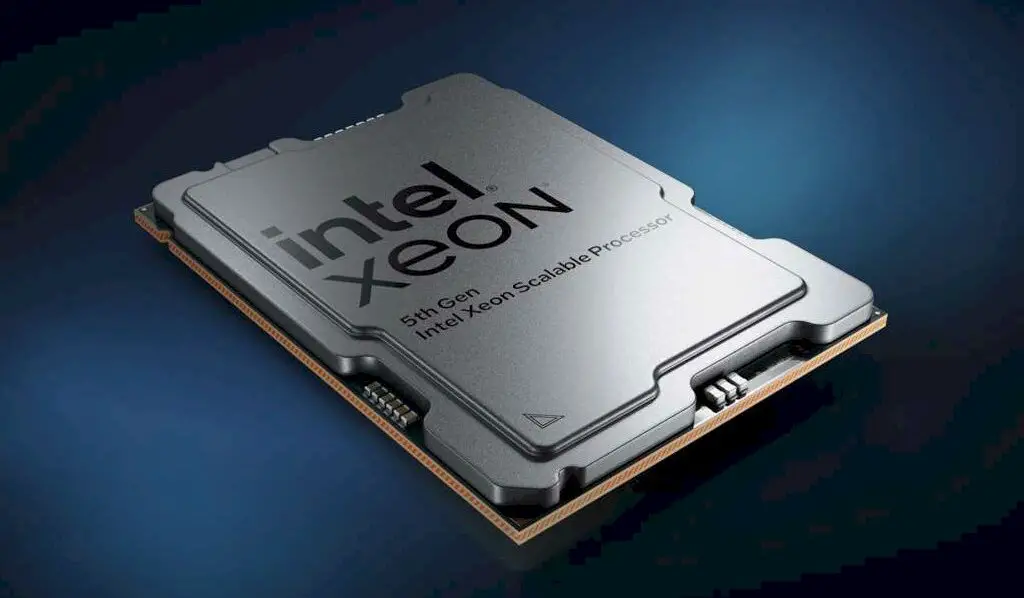
While Intel Xeon processors offer high-performance capabilities, older generations of Xeon CPUs may exhibit slower performance, leading to noticeable delays. Despite having multiple cores and high cache memory, tasks may lag, boot times may increase, and overall performance might not meet expectations. In this guide, we will guide you why older Xeon CPUs feel slower and how to speed them up?
Why Older Xeon Processors Feel Sluggish?
Xeon processors are designed for servers and workstations, prioritizing multi-core performance. However, modern applications often favor single-core speed, making older Xeon chips feel slow.
5 Key Reasons for Sluggish Performance
Single-Core Performance Limitations
Older Xeon processors were originally designed for data centers and enterprise applications that prioritize multi-core efficiency over single-threaded speed. As a result, they often struggle with everyday tasks like web browsing, software development, and running modern applications. This results i sluggish performance. This slowdown can be attributed to several factors including lower single-core clock speeds. Moreover outdated instruction set optimizations, and an aging microarchitecture lacking modern performance-enhancing technologies all contribute to reduced performance.
It also limits overclocking capabilities due to power and thermal constraints. Moreovers inefficient turbo boost mechanisms in some models, exacerbating the issue. These limitations cause older Xeon processors to fall behind newer software optimized for higher single-threaded performance, resulting in a noticeable drop in responsiveness during demanding tasks.
Poor Software Optimization
Consumer applications, such as web browsers, office programs, and games, are typically optimized for mainstream CPUs like Intel Core or AMD Ryzen. As a result, Xeon processors may not be fully utilized, leading to subpar performance. This is because software developers often prioritize optimization for more widely used CPUs, leaving Xeon processors to rely on generic optimizations that don’t fully leverage their capabilities.
Not only that, the unique features of Xeon processors, such as their high core counts and advanced security features. This may not be fully exploited by consumer applications which can lead to a situation where Xeon processors are not delivering the level of performance that users are expecting.
With that in mind, the lack of optimization for Xeon processors can also result in higher power consumption and heat generation, which can be a concern for users who value energy efficiency. In some cases, users may be able to overcome these limitations by using specialized software or workloads that are optimized for Xeon processors.
Although that’s true, this may require additional investment and expertise, which can be a barrier for many users. In conclusion, poor software optimization for Xeon processors can be a significant limitation for users who rely on consumer applications.
Memory Bottlenecks and Slow RAM
Older Xeon CPUs often rely on ECC RAM, which introduces additional latency due to its error-correcting mechanisms. To add in context, outdated DDR3 or low-speed DDR4 RAM can significantly limit performance. This creates a bottleneck that hinders overall systems efficiency. This can be particularly noticeable in applications that rely heavily on memory bandwidth, that includes video editing software or scientific simulations. The impact of slow RAM can be exacerbated by the fact that many older Xeon systems may not support faster memory speeds.
This can make it difficult for users to upgrade their RAM and improve performance. I forgot to mention, that the use of ECC RAM can also limit the availability of faster memory options, as not all ECC RAM modules are created equal. In some cases, users may be able to mitigate the impact of slow RAM by using software optimizations or workarounds. But that doesn’t mean these solutions may not always be effective, and users may still experience significant performance limitations. Having said that, the use of slow RAM can be a major bottleneck for older Xeon systems.
Slow Storage
Many older Xeon systems still encourage traditional hard disk drives (HDDs) instead of solid-state drives (SSDs). This is why it leads to longer boot times, slower loading of applications and an overall poor user experience. SSDs, on the other hand, offer significantly faster read and write speeds, making them a crucial upgrade for improving system responsiveness. The impact of slow storage can be felt throughout the system, from the time it takes to boot up to the performance of applications.
Users may experience delays when loading files, switching between applications, or performing other tasks. Additionally, the use of HDDs can also lead to increased wear and tear on the system, as the mechanical components of the drive can be prone to failure. Upgrading to an SSD can make a significant difference in the performance of an older Xeon system. With that in mind, users should be aware that not all SSDs are created equal, and some may offer better performance than others. Keep in mind, that users should also consider the compatibility of their system with newer SSDs, as some older systems may not support the latest storage interfaces.
Aging Hardware and Thermal Issues
As time passes the Xeon system’s thermal paste degrades, and dust accumulates in cooling fans which causes thermal throttling. This reduces performance, as the system struggles to maintain safe operating temperatures. In context, older systems may not have the same level of cooling efficiency as newer models making them more prone to overheating and thermal-related issues. The impact of thermal throttling can be significant, as it can cause the system to slow down or even shut down unexpectedly.
Users may experience errors, crashes, or other system instability, which can be frustrating and time-consuming to troubleshoot. On top of that the accumulation of dust and debris in the cooling system can also lead to increased wear and tear on the system which in turn reduces its overall lifespan.
In another scenario, users may be able to mitigate the impact of thermal throttling by cleaning out the cooling system, reapplying thermal paste, or upgrading to a more efficient cooling solution. With that in mind, these solutions may not always be effective, and users may still experience significant performance limitations. Having said that, the aging hardware and thermal issues can be a major concern for older Xeon systems.
Other articles you may find interesting
6 Ways to Improve an Older Xeon’s Performance
Upgrade to an SSD
Upgrading to a solid-state drive (SSD) is one of the most effective ways to breathe new life into an older Xeon system. Switching to an SSD can drastically improve boot times and responsiveness, making it feel like a brand-new machine. With an SSD, you can expect faster loading times for applications and files, as well as improved overall system responsiveness. This upgrade is especially noticeable in systems that previously used traditional hard disk drives (HDDs).
Increase RAM Speed and Capacity
Increasing the RAM speed and capacity is another crucial upgrade for older Xeon systems. Upgrading to higher-speed RAM, such as DDR4 or DDR5, can significantly improve system performance, especially in memory-intensive applications. What’s more is that it ensures that your system has at least 16GB of RAM is essential for smooth multitasking. With sufficient RAM, you can run multiple applications simultaneously without experiencing significant slowdowns or crashes.
Optimize Software and Operating Systems
Optimizing software and operating systems is a simple yet effective way to improve an older Xeon’s performance. Consider switching to lightweight Linux distributions, such as Lubuntu or Puppy Linux, which are designed to be resource efficient and fast. Adding further in context, disable any unnecessary startup programs to free up system resources and improve boot times. It would be best a practice to uninstall unused applications and cleaning up temporary files to further optimize your system.
Improving Cooling and Prevent Thermal Throttling
Improving cooling and preventing thermal throttling is essential for maintaining your Xeon system’s performance. As time passes the thermal paste can dry out, reducing its effectiveness. Reapply thermal paste to ensure optimal heat transfer between the CPU and cooler. Having said that, clean dust from cooling fans and heat sinks to ensure proper airflow and heat dissipation. If the occasion arises, upgrade to a better cooling system, such as a liquid cooling solution, to provide more efficient cooling and prevent thermal throttling.
Adjust BIOS Settings for Performance
Adjusting BIOS settings can help unlock your Xeon’s full potential. Enable “High-Performance Mode” or “Turbo Boost” to allow your CPU to run at higher frequencies and provide improved performance. Keep in mind that these settings may increase power consumption and heat generation, so ensure that your cooling system can handle the increased demands.With that in mind, be cautious when adjusting BIOS settings, as incorrect configurations can cause system instability or damage.
Overclocking (if Possible)
Overclocking can be a great way to squeeze extra performance out of your Xeon system, but it requires careful consideration. Pushing your Xeon beyond its stock speeds can increase heat generation and power consumption. Due to this it’s essential to ensure that your cooling system can handle the increased demands. If you’re unsure about it consider consulting with a professional or conducting thorough research before attempting to overclock your system.
Conclusion
Older Xeon processors are not out of the woods yet, as they still hold the value of a specific workload, but addressing slow storage, memory bottlenecks, and thermal issues can improve performance significantly. By upgrading storage, optimizing system settings, and improving cooling, you can extend the lifespan of your Xeon-powered system.





